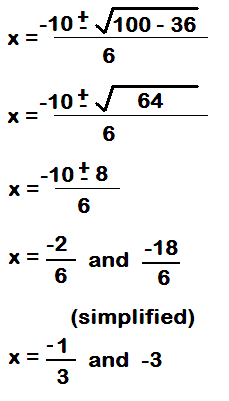Logarithms might seem like the stuff of complex math textbooks, but in truth they’re nothing more than an efficient shortcut to solving exponential problems. From solving tough equations to handling financial models or scientific data – knowing how to use logs will make life much simpler!
But don’t fret if math isn’t your forte – don’t worry, this guide will make logarithms accessible by breaking them down in plain English and showing you how to calculate them with ease with our free scientific calculator! Plus, we’ll cover some real world applications – logarithms can even help convert annual salary to hourly pay! (Wow!).
Let’s dive in!
What Is a Logarithm and Why Should You Care?
Before diving into calculator tricks, let’s answer one basic question about logarithms:
What Is A Logarithm?
A logarithm is defined as the reverse of an exponent, meaning if you already know its resultant exponent then using logarithm can help find its missing power.
Here is a simple example: (100 * 3 = 1000). When we want to find what power of 10 gives us 1000, we write “1 000 3.”
Log 10 =3 For everyday purposes, logarithms serve to reverse exponents — much like how division reverses multiplication.
Why should you care? Because logarithms can be found just about everywhere:
Finance – Calculations using compound interest, stock market trends and retirement savings projections all use logarithms as a measurement tool.
Science and Engineering use them for measuring sound intensity levels, pH levels and earthquake magnitudes respectively.
Data and Computing – Log scales can be found in algorithms, machine learning programs, and even storage calculations on computers.
Once we understand what logarithms are, let’s learn how to actually use them on a scientific calculator. Most free scientific calculators (both online and off) feature two main log buttons.
Logarithm (common log) – This logarithm uses base 10 as its starting point to provide answers for any number that exceeds 10. To this effect, 10 raised to what power gives me the desired number?
LN stands for Logarithm of Natural Logarithm (base e = 2.718). This is commonly used in finance and science.
Basic Logarithm Calculation (Base 10 Log)
Let’s say you want to find log(1000). Here’s how:
1. Press LOG.
2 Type in 1000.
3 Click Enter or =, and your answer should be 3 (103 = 1000).
Are You Searching For Ln (20) With Natural Log (Base E, LN Button) Need to Determine Ln (20)?
Press LN then Enter 20. Press Enter then Hit Return for approximately 2.9957 as output by LN Button 20 = LN 20
Logarithms in Everyday Life, From Salaries to Science
Do logs have any practical applications outside the realm of mathematics? Below are a few surprising applications where logarithms appear regularly!
1. Finance: Converting Annual Salary to Hourly Pay
Logarithms can be invaluable tools when it comes to calculating salaries, especially when dealing with compound interest or salary projections.
Logs provide a way of estimating how long it will take your salary to increase at a compound rate and reach a given income threshold.
If you need to convert an annual salary to hourly pay quickly and easily, here’s an easy method:
Formula: When considering hourly rates as the measure of annual salary and work hours per year (40 hours x 52 weeks), 2080 work hours would typically be covered annually in full-time jobs.
Therefore, if your annual income is $60,000.
Your hourly rate for 60, 000 2080 hours = $28.85!
Logs come into their own when your income grows exponentially due to raises or bonuses; you can use logarithms to predict how many years it will take until your target income level has been achieved.
2. Science & Engineering: Logarithms in Measuring Earthquakes
The Richter scale used to measure earthquake magnitude is logarithmic.
A magnitude 7 earthquake is 10 times stronger than its counterpart with magnitude 6, which in turn is 10 times stronger than its magnitude 5 counterpart.
Without logarithms, these calculations would be much harder!
3. Computer Science & Data Storage
Ever wonder why storage capacities (GB, TB etc.) increase by powers of 2? That’s logarithms at work!
Logarithms provide an estimate of how much data can fit in different storage sizes on new phones and laptops.
Advanced Logarithm Hacks to Speed Calculations
Congratulations–you are already an advanced logarithm user! Now, let’s take things one step further with some calculator shortcuts that will save time in calculations.
Hack #1: Logarithms of Any Base (Change of Base Formula)
Most calculators only support two base logarithms – LN (10), and LOG (10). But what if you need log base 2, 5, 10, etc?? Luckily there’s another hack! To convert any number base to log base ten you simply change its formula accordingly!
Utilize this shortcut formula:
Example: Want log2(32)? No worries: Log 2 (32 – 25 x 2) = 30 + 22 = 55. Simply input this value in your free scientific calculator, and you should get 5 (because 25 = 32).
Hack #2: Quick Logarithm Estimation
when Estimating without Calculators [7/30/2012] Want a fast way to estimate logarithms without using a calculator? Check out this hack:
Log(1) = 0, log(10) = 1, log(100) = 2
, and log(1000) = 3. Therefore, if you need log(500), know it will fall between 2 (log 100) and 3 (log 1000), likely being somewhere around 2.7.
Final Thoughts: Logarithms Are Easier Than You Think!
Logarithms may appear complex at first, but with some straightforward approaches and a good scientific calculator they’re easy to master.
Remember: For base 10 calculations, always use logarithms with log10=10, natural logs with base e=1, and the change of base formula with other bases (log10 = base10); logarithms can help in finance, science and salary calculations!
So the next time you find yourself dealing with exponential growth, salary projections or big data analysis, grab a free scientific calculator and let logarithms do the heavy lifting!












